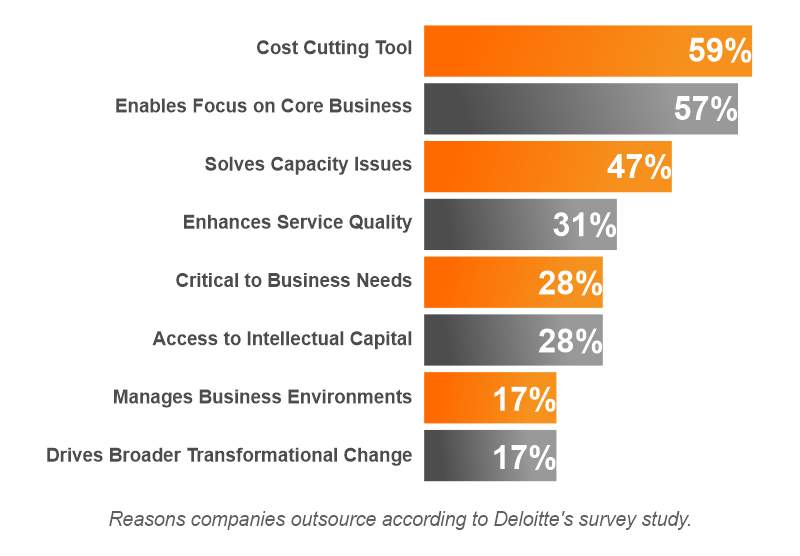Author’s Corner
In this white paper, Michael Carnahan, Senior Director of Client Services, explores Business as a Service model (BaaS) to help organizations deploy customized services and understand the impact of ready-made business processes.
Please click on the video to the right to learn more about the author, his paper’s key points, and his motivation for writing on this subject.
To discuss this white paper in more detail, please contact Michael using the information provided at the end of the article.
Business as a Service (BaaS) is a business model that offers real-life services such as accounting, marketing, or IT to other businesses. BaaS is characterized by an instant, on-demand service where businesses pay only for what they use (some refer to this as a utility model). According to Ed Miller, managing director for Accenture’s Workday Business Group, "The marketplace is quickly moving toward a new era of service delivery where applications, infrastructure, and business processes are brought together and delivered as-a-service." The overall theme in this model is the provision of companies with "plug-in, scalable, consumption-based services," guaranteeing better business outcomes (Miller, 2019).¹
So, what makes businesses want to partner with BaaS providers? Simply, instant gratification. According to Deloitte Insights (2017), organizations are seeking fast, easy, and seamless access to core business services that other businesses are offering and maintaining, enjoying the same benefits as if they did it themselves.² With BaaS, businesses can deploy customized services and ready-made business processes. Most importantly, businesses can become more agile in managing their people and technology costs.
One of our large clients who runs urgent care clinics across the country was new to the BaaS model. On many occasions, their leadership set aside our discussions about what we could do for them outside of coding and billing. When the topic of accounting or business office support comes up, many clients are quick to say, “we’re good.” And they’re not always wrong. But what happens if there is a shortage of qualified talent. What if there was say… a pandemic?
Why do companies outsource in the first place?
Historically, saving costs was one of the primary drivers for outsourcing, whether it was IT services, marketing, or medical coding and billing. A survey study by Deloitte highlighted three key reasons for outsourcing: cost, enabling core business functions, and solving capacity issues. Business organizations are outsourcing today, less for the cost savings and more for the transformational change and improved business results.

Further to Deloitte’s research, there are other benefits that explain why outsourcing is now a key strategic tool for businesses worldwide. They include:
-
Cost-effectiveness: With outsourcing, businesses get their work done efficiently and at a lower cost than if they did it themselves. One of our clients saw a 59% cost savings over the past three-year period.
-
Employee flexibility: Only by outsourcing can companies gain total flexibility for their staff. Outsourced employees can work at off-hours, thereby better supplementing an organization’s workforce. Our client has a department leader now working part time. She opted to stay and be of valuable service instead of retiring. Largely this was accomplished because of our ability to complete the work she assigns, no matter what time of day she assigns it. Her counterparts wouldn’t work nights to accomplish this.
In addition to keeping leaders on the job, we were also able to step in for a COVID illness, a pregnancy, and we helped fill a void for someone who took extended FMLA.
-
Shift focus to business growth: Fifty-seven percent of the respondents from Deloitte’s survey said they prefer outsourcing so they can focus on core business. One of our clients, in urgent care, is in acquisition mode. They have taken over 11 facilities in the past year. They have no worries about staffing because we consistently match their operational uptick with our resources. We seamlessly inserted ourselves into their business office, offering consulting when they needed additional business acumen.
As our client continues to shift to a Business-as-a-Service (BaaS) model in staff outsourcing, their growing demand for staff outside of traditional billing and coding is growing. And it’s not just happening at this company. The staff outsourcing market is forecasted to reach $45.8 billion by 2027. Our client works with us because we are a strategic partner. We will supply BaaS models that reduce costs and improve business process efficiency, all while holding true to our core value of providing extraordinary outcomes.
The VP of one of our healthcare services clients said they will need “an end-to-end transformation of their business processes” in the years to come. Her “ah-ha” moment came as we reviewed their contract. We were already the business partner she needed. We were recently told the client had forgotten that we were a vendor. We had become a partner; a partner they didn’t know (or perhaps had forgotten) how much they needed. They forgot because they don’t have to think about it – we are always there.
References:
¹Miller, E. (2019). Preparing the organization for HR in the "New": Agile and as-a-Service. Available at https://www.accenture.com/us-en/blogs/cloud-computing/miller-continuous-innovation-workday
²Deloitte (2017). Everything-as-a-service: Modernizing the core through a services lens. Available at https://www2.deloitte.com/us/en/insights/focus/tech-trends/2017/everything-as-a-service.html

